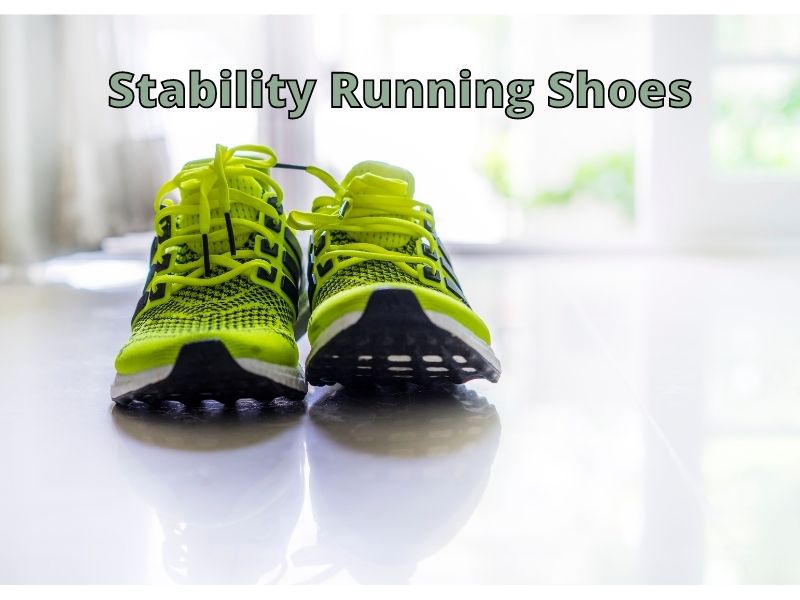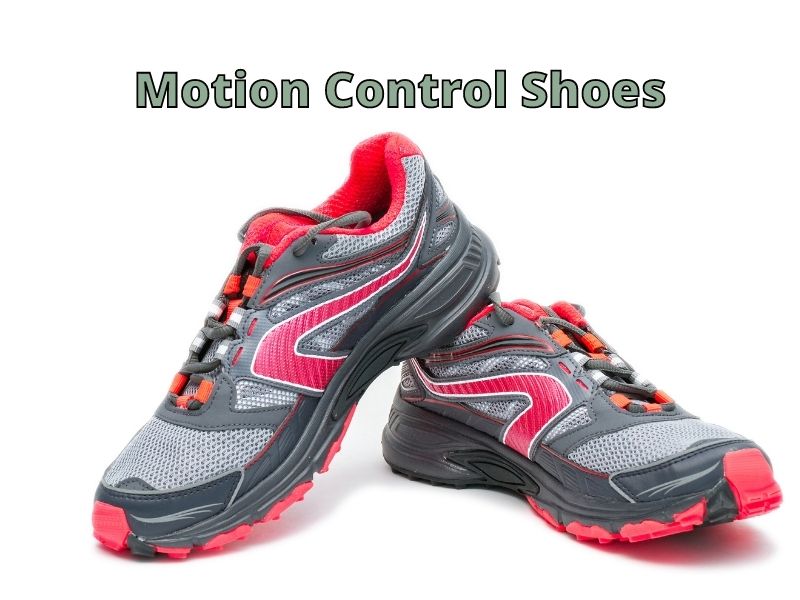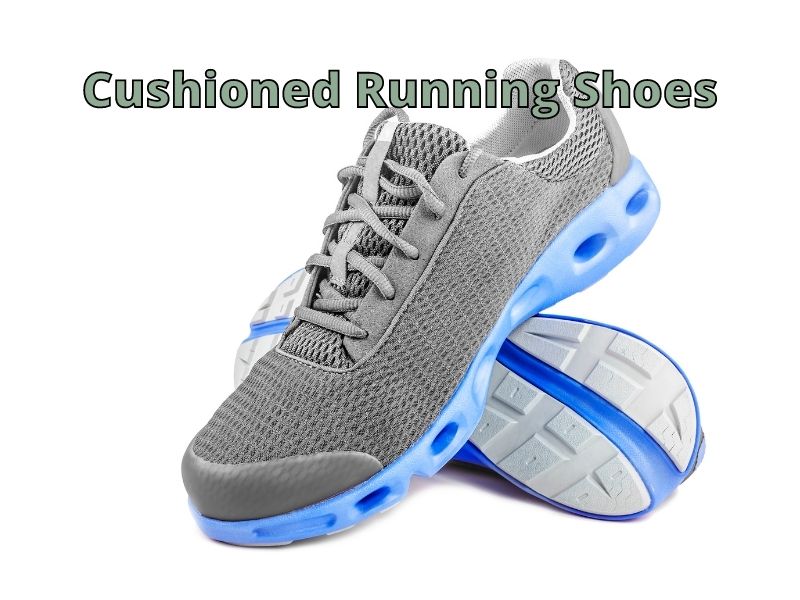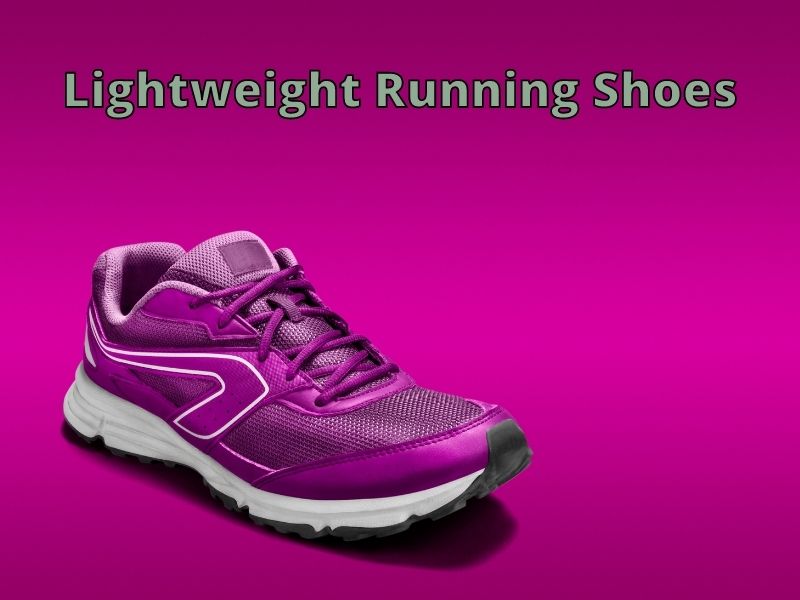Running shoes aid your running and protect your feet at the same time. However, with so many different types of running shoes available on the market, you might get confused.
There are five main types of running shoes, based on running style, running terrain, pronation, and foot size and shape. Furthermore, they have a specific structure and are designed for particular activities.
Here is a list of the five most common types of running shoes that you need to know:
- Stability Running Shoes
- Motion Control Running Shoes
- Cushioned Running Shoes
- Lightweight Running Shoes
- Trail Running Shoes
Each of these running shoes offers a variety of features. But no matter which running shoes you choose, they will provide you with comfort, support, flexibility, and durability. First, let’s briefly discuss the definition of running shoes.
What Are Running Shoes?
Running shoes are specifically designed to protect your feet from injuries, increase your performance, and make running easier and faster. These shoes come in different sizes and styles and offer a variety of features. No matter which running shoes you choose, they will provide comfort, support, flexibility, and durability.
Running Shoes Classifications
Many types of running shoes are available on the market, each with different advantages and purposes. These running shoes are classified based on design, structure, function, activity type they are suitable for, and features they offer.
In this article, I will discuss five main types of running shoes that you need to know about. But, first, let’s see each type in detail.
Stability Running Shoes

Stability running shoes are one of the most common types of running shoes.
Stability running shoes are specially designed for neutral feet, normal arches, mild control problems, and normal pronation (pronation is the inward rolling of the foot as it touches the ground). [for further details about Pronation]
These runners require running shoes with cushioning in the midsole and sufficient arch support. In addition, stability shoes reduce pronation by providing good arch and ankle support.
Stability running shoes are a great choice if you have normal pronation and want shoes that offer arch support and are flexible.
Stability running shoes are a balance between cushioning and motion control shoes. They provide less cushioning and are less rigid than motion control shoes.
Structure
- Stability shoes offer extra arch support with a reduced heel drop, some cushioning, and a slim medial post.
- The slim medial post is made from EVA foam that adds support and reduces overpronation.
- The heavy heel counter, thick sole, and arch support make stability running shoes heavier, but they won’t feel as heavy on your feet. Also, stability shoes aren’t bulky in appearance.
Pros
- Stability running shoes are designed in such a way that they provide forefoot flexibility and rearfoot stability.
- Stability shoes have added support and cushioning in the midsole area. These supportive features in the midsole prevent inward foot tilt and keep the foot in a neutral alignment.
- These shoes prevent excessive foot and ankle motion while still allowing you to move freely.
- If you are a beginner at running, stability shoes are an excellent choice to balance your foot and running needs. They will keep your pace steady and fast.
Cons
- Stability shoes usually feel stiffer and less cushioned.
Motion Control Running Shoes

Motion control running shoes are great for runners with low arches and severe overpronation. These shoes are also ideal for heavy runners and flat-footed runners, reducing foot motion.
These running shoes are designed to help them reduce or prevent overpronation [overpronation is the excessive inward roll of the foot as it touches the ground].
Motion-control shoes, also known as high stability shoes, offer extra support for flat-foot runners weighing over 180 pounds.
Motion-control shoes are the least common running shoes. However, these shoes reduce the energy required for every stride, which improves running techniques.
Motion-control shoes are more rigid and stiff than other running shoes. These shoes are rigid enough to keep the heel from turning out. In addition, they prevent the foot from rolling outwards or inwards using a posting system.
Structure
- Motion-control shoes have wide soles to reduce excessive motion and overpronation and offer added shock absorption. The wider soles of these shoes counter overpronation. Also, these shoes reduce the joint load by providing maximum shock absorption.
- Motion-control shoes offer maximum arch support with a high heel drop and a chunk of foam in the medial post (inner midsole). The arch area is filled in for enhanced stability. These shoes are well fitted and have a dense foam in the arch to deal with severe overpronation.
- These supportive features in the midsole are added to control severe overpronation.
- Motion-control shoes have a stiff heel and a solid overall shape. In addition, their outsole is wide to provide maximum stability.
- Motion-control shoes have a sturdy shoe bed interface and less cushioning to support foot placement on the ground.
- Motion control running shoes offer cushioning in the inner arch for ankle and foot support. In addition, these shoes are more rigid than other running shoes, with more cushioning and arch support.
- Motion-control shoes provide more support than stability shoes. In addition, they have saddles for added support.
Pros
- Motion-control shoes are perfect for heavy individuals who require maximum stability and durability.
- These shoes are a great option if you have foot issues, leg abnormalities, or persistent injuries.
- Motion control running shoes are breathable.
- Motion-control shoes are comfortable and allow for a more efficient running style.
- These shoes offer maximum support in the arch to prevent overstraining your feet.
Cons
- Motion-control shoes are heavier and can make your legs and feet feel fatigued after a run.
- These shoes have some cushioning but are far firmer than stability shoes.
Cushioned Running Shoes

If you are looking for extra cushioning in running shoes, you can go for a good pair of cushioned running shoes.
Cushioned running shoes are typically designed for runners with high arches, rigid feet, and little to no pronation. These shoes offer protection and shock absorption to your feet; however, they lack extra support.
For runners who under pronate, cushioned running shoes are essential as they help reduce shock by mimicking the natural process. Cushioned running shoes, also known as neutral padded shoes, are also great to counter supination (if your feet roll outward) [for further details about Supination].
Cushioned running shoes are highly flexible and made with lightweight materials. These shoes have an extra soft feeling, like walking on a pillow. They have sufficient cushioning and offer minimal rigidity. You can choose light or heavily cushioned running shoes depending on your preferences.
Structure
- Cushioned shoes have a sock-like upper and soft soles. They have enough room in the toe box to allow your toes to move freely.
- These shoes have thick midsoles that offer extra shock absorption. As a result, they protect your feet from harsh impact when running on hard surfaces.
- Cushioned running shoes have shock dispersion features in the heel and forefoot area.
- Cushioned shoes have thick soles and make you feel like you are running on clouds. Instead of affecting your joints, these soles absorb shock while running.
Pros
- Cushioned running shoes are ideal for the marathon and long-distance runners since your body can suffer over time.
- These shoes protect you from joint pain and running injuries.
- Cushioned running shoes are ideal if you suffer from low back pain or are on a recovery run.
- You can also wear them if you frequently suffer from joint pain or ankle sprains.
- Cushioned shoes allow you to relax your body too much.
- Cushioned running shoes are great for you if you have suffered multiple injuries or need extra protection during running.
- Cushioned running shoes provide your feet with enough support and comfort.
- These shoes are lightweight with increased performance.
Cons
- Cushioned running shoes are more expensive than other running shoes.
- While these shoes have additional cushioning, they lack many supportive and corrective features.
- These shoes do not offer much sensitivity.
Lightweight Running Shoes

Lightweight running shoes, also known as cross country spikes or racings flats, are great for runners who do speed work. These shoes are designed to support natural and dynamic foot movement.
Lightweight shoes provide a great deal of foot sensitivity due to their lightweight nature and minimalist feel. These shoes reduce the impact of your feet on the ground. They make you feel as if you aren’t wearing any shoes.
You need lightweight running shoes if you plan to run on smooth surfaces, do power exercises, or do time trials. These shoes are perfect for speed workouts like intervals, sprints, tempo runs, and competitions.
Lightweight shoes provide speed and flexibility and help build foot strength. Because lightweight running shoes have extreme flexibility, I recommend you begin with short jogs and gradually progress to longer runs as your foot strength grows.
Structure
- Lightweight running shoes have thin soles with stretchy mesh uppers.
- Lightweight running shoes have less cushioning and foam.
- Lightweight running shoes have less weight with flexible cushioning and a minimalist design.
- These shoes have mesh uppers for proper ventilation.
- Lightweight running shoes weigh 9.5 ounces or less.
Pros
- Lightweight running shoes are lighter, breathable, and more flexible.
- Lightweight running shoes are comfortable and flexible, and they reduce soreness and fatigue after running.
- The comfort of lightweight shoes doesn’t tire your feet or legs out.
- You can use lightweight running shoes for different activities like speed workouts, intervals, sprints, and competitions.
- Lightweight shoes help you run faster.
Cons
- Lightweight running shoes do not work well for beginner runners and trainers. You cannot use these shoes for general training.
- Lightweight running shoes do not provide enough protection to your feet While running on rocky trails. They do not offer much shock absorption either.
- Lightweight running shoes do not offer much cushioning and shock absorption features.
- Lightweight running shoes wear out quickly compared to other running shoes, so you need to replace them often.
Trail Running Shoes

Trail running shoes are designed specifically for running on various terrains, including roads, mud, grass, snow, and hard-packed paths. They are best for running across dirt, mud, and rocks.
Trail running shoes are a hybrid of running sneakers and hiking shoes. I suggest trail running shoes for slippery surfaces like wet grass since they have large lugs.
These shoes have special features to help you run on different paths. These shoes provide maximum support, protection, and stability.
Structure
- Trail running shoes have midfoot wraps and lugged rubber soles. They have harder and more durable uppers.
- These shoes provide traction on the toe and heel parts.
- Trail shoes are stiffer at midsoles. They have heavy and sturdy upper to support you. There is enough cushioning for running on rocky terrain.
- Trail shoes have plates under their outsoles to protect your feet from sharp objects.
- These shoes have larger and thicker lugs in their outsoles that provide maximum traction and grip.
- These shoes are waterproof, which makes them less breathable.
Pros
- Trail running shoes are great for runners who run on varied terrain for long periods.
- Trail shoes are ideal for running on uneven, rugged terrain. They provide maximum traction to run on uneven, soft, snowy, slippery surfaces.
- These shoes keep your feet comfortable and protected for longer runs.
- Trail running shoes provide you with a great level of grip and traction.
- These shoes provide excellent ankle support.
Cons
- Trail running shoes are less breathable.
- Trail shoes are stiffer than other running shoes.
- These shoes are slightly heavier.
Comparison of Different Types of Running Shoes
| Characteristics | Stability Running Shoes | Motion Control Running Shoes | Cushioned Running Shoes | Lightweight Running Shoes | Trail Running Shoes |
|---|---|---|---|---|---|
| Cushioning | Less cushioning | Less cushioning | Extra cushioning | Less cushioning | Adequate cushioning |
| Arch support | Adequate arch support | Extra arch support | – | – | – |
| Heel drop | Low heel drop | High heel drop | – | Little to no heel drop | – |
| Weight | Heavier | Heavier | Lightweight | Lightweight | Heavier |
| Flexibility | Forefoot flexibility | Rigid | Extremely flexible | Extreme flexibility | Stiffer |
| Breathability | – | Breathable | Breathable | Breathable | Less breathable |
| Sole | Thick sole | Wide soles | Soft and thick soles | Thin soles | Lugged rubber soles |
| Upper | – | – | Sock-like upper | Mesh upper | Sturdy upper |
| Pronation type | Normal pronation/Less overpronation | Severe overpronation | Little to no pronation | – | – |
| Foot type | Normal arch, neutral feet | Low arches, flat-footed runners | High arches, rigid feet | Sensitive feet | A very high or very low arch |
| Activities | Beginner running | If you have foot issues/injuries | Marathon runners and long-distance runners | Speed workouts, intervals, sprints, tempo runs, competitions | Longer runs |
| Running terrains | – | – | Hard surfaces | Smooth surfaces | Uneven, rugged terrain, soft, snowy, slippery surfaces |
Thanks for visiting helpshoe.com
References

